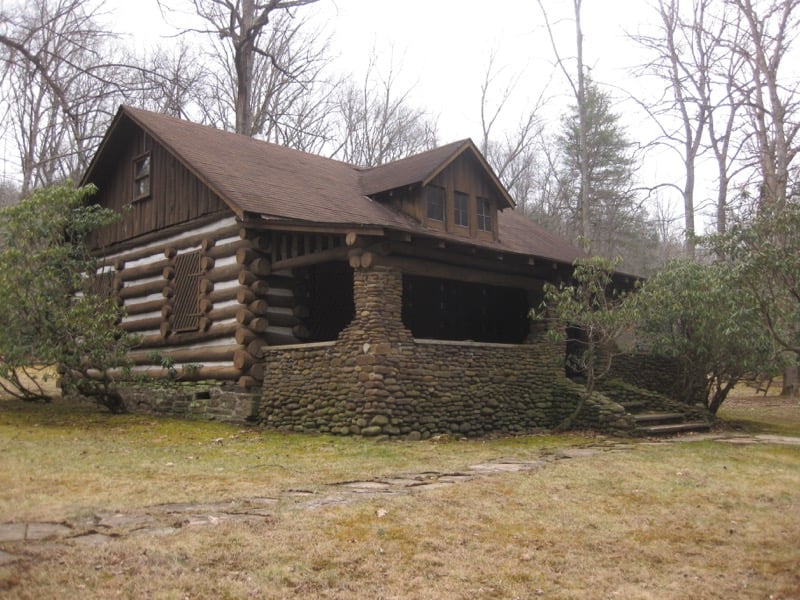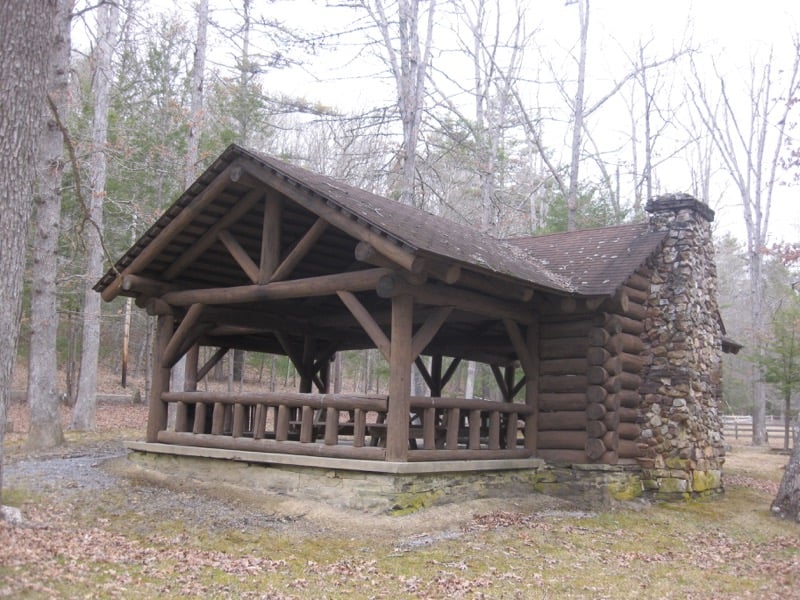New Deal Resources in Seneca State Forest Historic District
The area that is now Seneca State Forest was heavily timbered after the Civil War. In 1924 the bulk of the current forest holdings were purchased by the State of West Virginia. In doing so they hoped to improve timber stands and wildlife habitat for the long term. The forest was named "Seneca" for a nearby Native American trail. Soon after a tree farm and campground were established at Seneca State Forest. However, conservation and recreational development essentially stopped from the onset of the depression until the Civilian Conservation Corps (CCC) arrived in the forest.
As part of the New Deal, President Franklin Delano Roosevelt combined the creation of jobs to spur the economy with programs to invest in public infrastructure across the nation. One focus of these programs was to create parks and recreational resources for the public. While the CCC, created in 1933, had an express mission to address flood control, prevent soil erosion, manage forestry, and other broad environmental policies, it also worked to create public recreational assets. The CCC's efforts in Seneca State Forest addressed both environmental and tourism goals.
One CCC camp, Camp Seneca (S-51), was established in the Seneca State Forest in the summer of 1933 as a tent camp, with more substantial structures completed by January 1934. CCC Company 1537 constructed eight cabins, built truck trails, improved timber stands, and worked to clear fire hazards before leaving in 1938. CCC work on the site addressed recreational and conservation values including the construction of cabins and picnic areas and the creation of infrastructure to house forestry operations as well as conservation such as fire management. The CCC provided job training, employment, and income to participants during the Great Depression. Their work at Seneca and elsewhere created public infrastructure serving the public during the Depression and continuing to this day.
Seneca's rustic style resources including the cabins, picnic shelters, and superintendent's residence are excellent examples of rustic "parkitecture." Many structures conform to published designs by the Conservation Commission of West Virginia Division of Forestry and the CCC. Seneca State Forest's overall landscape plan has roads and trails that are sympathetic to the topography in the forest. Placement of recreation resources in tight clusters tucked in wooded areas and using rough natural materials allowed buildings and structures to be unobtrusive and not detract from their natural setting and appearance, providing visual harmony.
New Deal Resources in Seneca State Forest Historic District was nominated under the New Deal Resources in West Virginia State Parks and Forests Multiple Property Listing by Lena Sweeten McDonald. The nomination was prepared by Hanbury Preservation Consulting and the district was listed on the National Register in September 2018.




